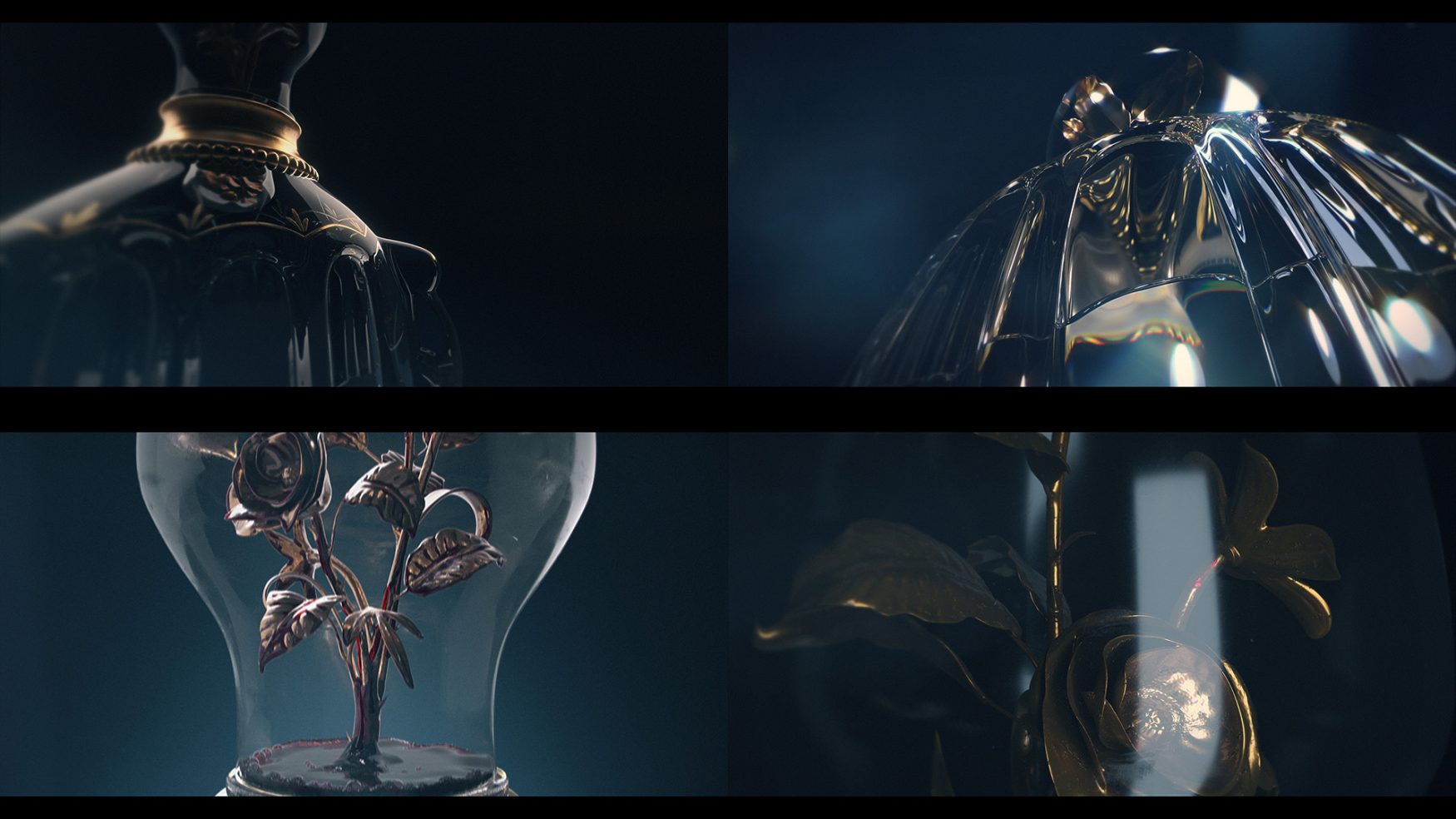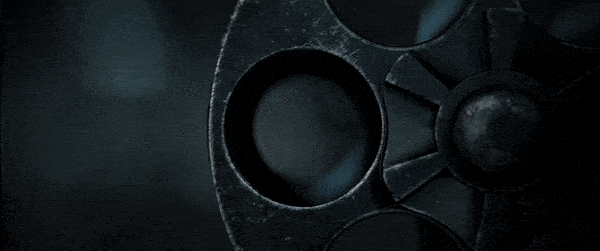The title sequence is one of cinema’s oldest and most iconic crafts. Fans of James Bond adaptions eagerly anticipate their slick title designs, and the infamous rising text of Star Wars is as memorable as its light sabres.
In recent years, the advent of streaming, user data and the skip button have posed unique challenges for title designers. With a consumption model driven by behavioural data, viewing habits on streaming platforms play a key role in shaping future investments and the creative direction of new productions. Designers need to keep up with the greater scrutiny imposed by audiences.
To add further compilations, AI image-generative tools like MidJourney make the use of data even more powerful. As the technology develops, we may see algorithms that can generate title sequences using creative inputs and behavioural data to streamline production costs.
Can AI disrupt audiences, priming them with suspense and anticipation, or will it produce standardised title sequences that fail to live up to the creativity of human designers?
Storytelling through design
Title sequences can simultaneously live at the foremost and furthest point of someone’s mind. Ask a fan to describe their favourite adaptation of James Bond, and their first thought may be the actor or a particular villain. If you then ask them their favourite title sequence, they’ll likely just as quickly recall a particular film and the song released with its launch.
This is because an epic James Bond title sequence is as much a part of the branding and experience as any other part of the film.
The first Alien film uses its title sequence for a dramatic effect. As the camera slowly pans across space, elements of the title are animated one piece at a time in a random order, keeping the reveal a mystery almost until the very last transition. It’s creating atmosphere, priming the audience for a narrative that builds tension.
Even before the broad adoption of computer graphics, designers delivered distinctive titles using traditional methods. Saul Bass’s titles, such as Man with a Golden Arm (1955) and Hitchcock’s Psycho (1960), are iconic and remain influential today due to the unique style Bass integrated into each of his projects.
In all cases, the key is storytelling. It’s an opportunity to affect the emotions of the audience through a unique medium. You can build suspense, tease the story, heighten the atmosphere, or create a sense of calm before the storm. Some titles can even work as stand-alone pieces, offering audiences something different to experience before the film or series begins.
A title sequence can be an opportunity to build layers of intrigue; teasing story beats with abstract imagery that only becomes realised when viewers watch the content. Later, when the audience recalls that level of detail, it can improve the memorability of the film or series.

In the age of streaming, standout titles with heightened memorability are integral to capturing the attention of online audiences.
Data and grabbing attention
Streaming has changed the way we consume media. Title designers can no longer rely on the captive audience of movie theatres to tell a story. And on streaming platforms today, individual films no longer dominate – docuseries and serialised dramas have never been more numerous. Thankfully, a good title sequence is as relevant for a series as it is for film.
The boom in series production can be explained by the streaming platform’s business model: to capture the long-term attention of users. Driven by behavioural data, platforms develop content that meets a proven demand – and it goes far beyond measuring the total length of time spent within the platform itself. ‘How quickly someone finishes a series’ or ‘how many episodes they consume in one sitting’ are just some of the many valuable data points used to make decisions for future productions.
For title designers in particular, the data point that could matter most is the skip button. If a viewer is ‘binging’ episodes back-to-back, there’s a strong incentive to speed up any intermissions. It comes down to user attention and how much the viewer values the title.
Despite these challenges, the title sequence has continued to thrive, with designers finding new ways to adapt their craft and stay relevant. The same rules still apply – a truly beautiful and engaging design has the potential to disincentivise skipping entirely. Teasing plot points while focusing on visual artistry can re-engage with audiences.

Another approach is to make unique titles for every episode of a series, providing cryptic previews of the episode and delivering something fresh for viewers to look forward to.
In any case, it’s about responding to the higher demands presented by streaming platforms and staying true to the key tenants of storytelling.
Territory Studio produced a series of unique title sequences for each episode, referencing the content to build intrigue into the forthcoming storyline.
But what if AI could do this all for you?
The advent of AI
Today we’re in a fascinating but early stage of AI generative technology, but the quality is noticeably high already. Research Runway’s Gen-1 can even automate basic motion design.
It’s up for debate as to how these AI solutions will impact the creative industry, but all the signs point toward a greater and greater end product.
As discussed, behavioural data is one of the biggest drivers of creative direction on streaming platforms, but humans still have to interpret this data in innovative ways. If platform behavioural data can be used to prompt automated algorithms that are, in turn, used to produce high-quality title sequences, we could see streaming services opting for speed and efficiency over human-led design to cut costs.
It’s all very well using behavioural data to predict the interests and consumption habits of viewers, and the breadth of creative work available to feed algorithms can certainly provide the building blocks of a ‘new’ image, but I’d argue there’s more to human creativity than the amalgamation of data. The human experience and human emotion are what truly dictate the direction of an artist.
Great storytelling affects people emotionally. Without the subjective contribution of a human artist, it’s difficult to argue it can be effectively replicated, and there’s a danger that overreliance could stifle innovation.
Story-driven Titles in a World of AI
Every art form will need to come to terms with AI in the near future. Title designers have already adapted to the data-driven, attention economy and like all good art forms, we’ve overcome these new constraints to drive greater innovations in design.
AI’s potential inability to replicate or understand human emotion could limit its application, but this is not to say that AI cannot play a key role in the creative process. In theory, artists could use AI to truly harness the power of behavioural data while adding their own subjectivity.
When used as a tool, AI could help artists meet stricter budgets and deadlines without stifling the emotional effect of storytelling. It’s a balance between meeting the needs of streaming platforms and adding the subjective human experience. To achieve this, it’s imperative that artists remain in control.
By tapping into AI’s strengths effectively and not seeing it as an all-in-one solution, we could maintain the role of the artist and ensure title sequences remain story-driven and original.
About the Author

Chris Sharpe is Territory Studio’s Creative Director, specialising in branding, CGI, and narrative-driven motion graphics. With nearly two decades of experience developing, directing and executing award-winning creative, Chris is well versed in the successful delivery of creative solutions for leading global brands and studios.








